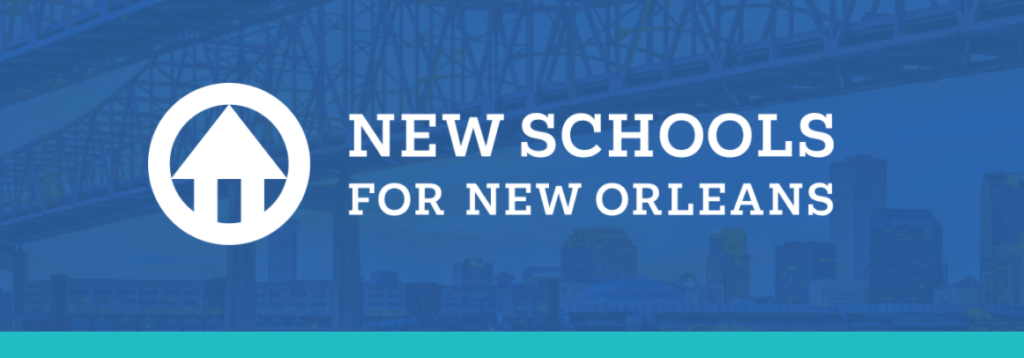Like many cities nationwide, New Orleans’ schools are seeing changes in enrollment that affect future plans
As in many cities nationally, enrollment in New Orleans’ public schools is dropping. This is not the result of more children entering private schools or moving to other parishes to attend their public schools – many private schools and public schools in other parishes are also seeing declines. This is not simply a reflection of the impacts of COVID-19. Instead, we are seeing the effects of a parish population that is no longer gaining new residents along with steadily decreasing birth rates.
This will have a real impact on our schools, so NSNO has worked with NOLA-PS to develop an “enrollment landscape analysis” over the last six months. We have shared our findings with school leaders and the district, and together, we are confident that our system can weather these shifts and continue to offer children great school options. Below, we take a look at the causes of enrollment declines and the changes we may have to make.
Slowing population growth and birth rates change the city’s demographics
Immediately after Hurricane Katrina, our city’s population had shrunk to less than half of what it had been before the storm. In the years that followed, our population grew swiftly, and it continued to rise until five years ago, when it stopped growing. Today, our city still has 20% fewer people than it did before Hurricane Katrina, according to the U.S. Census Bureau.
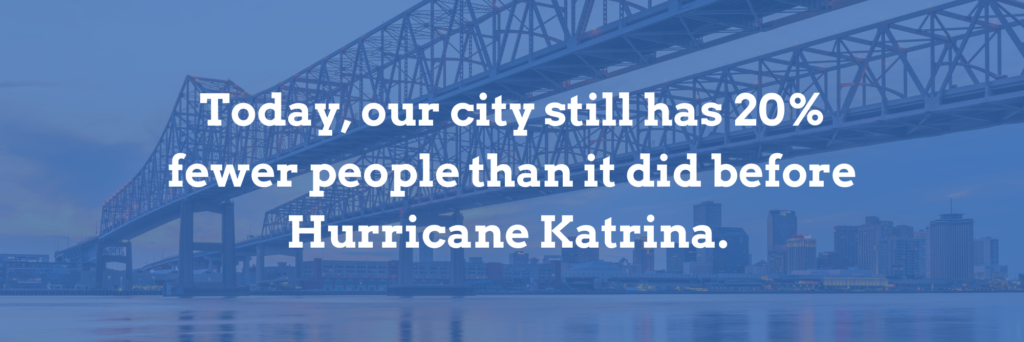
Not only do we have fewer people overall, but the population has a smaller proportion of children. According to The Data Center, in 2000, around one-third of our city’s households included children under 18 years old. By 2019, only 17% of New Orleans households included children under age 18. Meanwhile, the number of babies born in Orleans Parish has also been steadily declining, according to the Centers for Disease Control and Prevention. We have seen a 14% drop within five years; around 700 fewer babies were born in New Orleans in 2020 than in 2015.
A changing enrollment landscape
Within just a few years, the decrease in birth rate alone means there are fewer students here to enroll in our city’s kindergarten classrooms and enter our public schools. Our kindergarten class this year was the smallest in over ten years–16% smaller than it was in 2014, representing a difference of about 650 students; this number represents more than the entire student body of an average-sized school. Year by year, as these smaller classes move through grade levels, our public school enrollment will continue to decrease.
Explanations we ruled out
As we investigated these trends, we looked at many potential causes of the shifts. As we gained certainty that the city’s slowing population growth and decreasing birth rates are at the root of the dipping enrollment, we were also able to “rule out” other hypotheses. We wondered if private school enrollment had increased, for instance, but found it has been declining at a faster rate than public schools. COVID-19 may have made an impact on enrollment sizes these past two years, but it cannot account for the shifts overall, which were already occurring pre-pandemic.
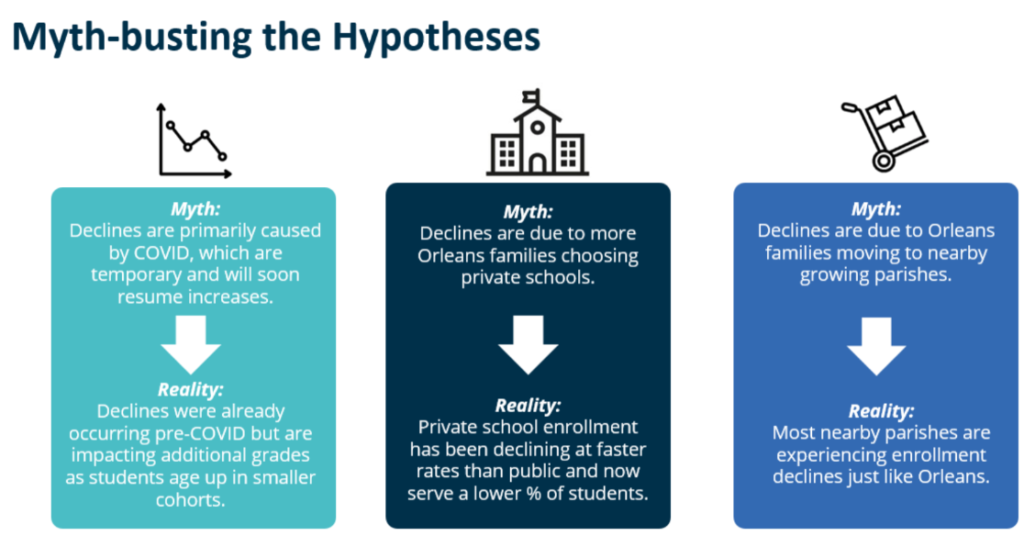
New Orleans is not alone in facing an enrollment decline. We see similar trends in nearby parishes like Jefferson Parish, St. Tammany Parish, and St. Charles Parish, as well as the state at large and many other large cities, including Atlanta, Austin, and Nashville.
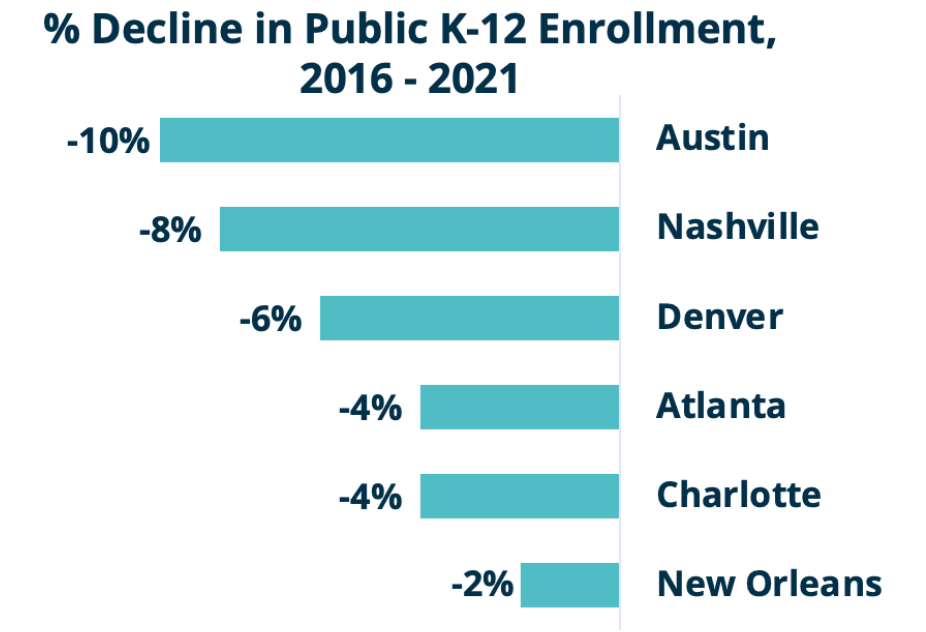

What’s next?
Given these trends, we expect enrollment to either be roughly flat over the next few years by returning to pre-pandemic levels, or continue to decline at similar levels each year.
Even without future enrollment declines, our system’s current under-enrollment is already creating challenges for our schools. This year, for instance, only 86% of open “spots” in our public schools across the city were filled. Because our schools are funded on a “per pupil” basis – a set amount of dollars for each student the school enrolls – open spots mean schools will need to make tough decisions about limited resources across classrooms while managing ongoing fixed (unchangeable) costs like facility maintenance, utilities, and some staffing and materials.
School-level example
- New Orleans public schools serving only grades K-8 each enroll 550 students, on average.
- Let’s assume a school sets a target of 550 students to enroll each year.
- At the system average fill rate of 86%, the school would enroll 475 students out of its target of 550 students.
- The resulting gap of 75 open seats would translate into a funding gap of $725,000 for that school.
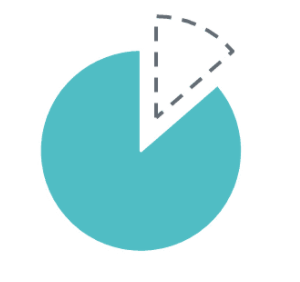
In our school-level example, a funding gap of $725,000 could mean a school having to make the following cuts:
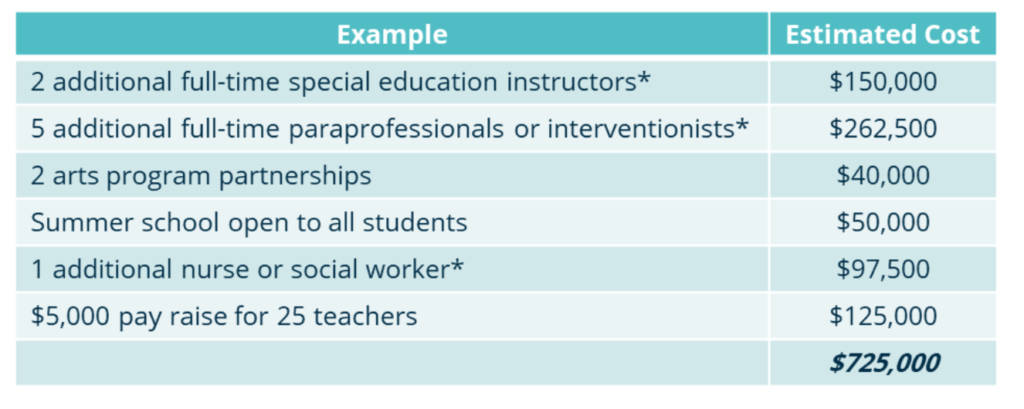
As a result of these pressures, two New Orleans public schools chose to close voluntarily at the end of the current school year. These closures, plus two additional school closures due to poor academic performance, will mean that there are fewer open spots. However, at the same time, some schools are continuing to add grades to their schools or attempting to increase the number of students they serve in existing grades.
This is a difficult problem, and there are many decisions NOLA-PS and charter schools must make in the next few months that could further exacerbate under-enrollment and create more open spots.
It’s crucial that NOLA-PS and OPSB prioritize this issue and create a comprehensive plan to address it to ensure our educators and students have the quality supports and opportunities they deserve.
As they develop this plan, we recommend that NOLA-PS and OPSB:
- Commit to updating and regularly sharing the data included in NSNO’s enrollment landscape analysis in future years;
- When making or presenting important decisions to school leaders or OPSB that would impact under-enrollment (charter approvals, charter renewals, facility assignments, etc.), include information on the impact;
- Incorporate specific goals to address under enrollment in future strategic plans and the new NOLA-PS superintendent’s performance objectives;
- Work with a demographer to develop reliable future enrollment estimates; and
- Work with schools to define and standardize how we measure under-enrollment and “open seats.”
At NSNO, we will continue to support the district and our schools. In the spring, we will release further data related to this issue on enrollment demand and facility capacity.
We are confident that if the new NOLA-PS superintendent prioritizes this issue and successfully collaborates with our schools, we can find a way to ensure all children can access a high-quality education, even as enrollment declines. As our student population shifts, our commitment to students will not change.
You can find NSNO’s full report on enrollment declines, as well as corresponding data and material, here.
